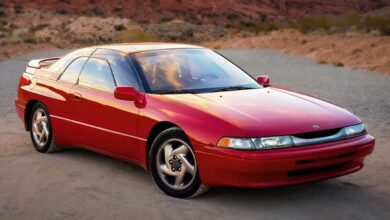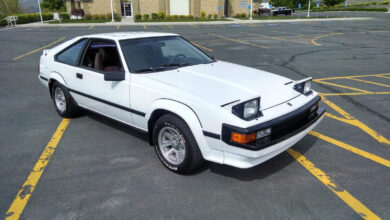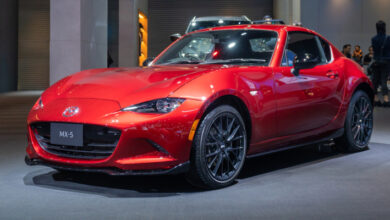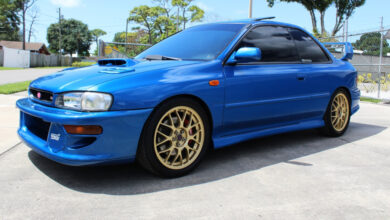Joining the Rotary Club with the 1987 Mazda RX-7 Turbo
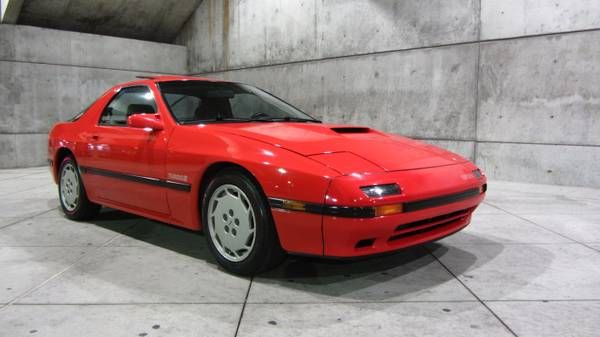
When it comes to Japanese sports cars, the Mazda RX-7 is an intriguing option because of its unique rotary engine. Once Mazda began adding forced induction into the rotary equation, tuners started realizing the ridiculous potential of the RX-7. Due to the success of the ‘86 model, the 1987 Mazda RX-7 Turbo II hit the streets with big shoes to fill.
Luckily, Car and Driver named the Mazda RX-7 Turbo II one of its 10 best cars of 1987. This was the second consecutive year the RX-7 Turbo made its way on that list. Mazda already knew they had a hit, but even they likely did not realize what they started.
To this day the RX-7 has a large group of enthusiasts across the world. A lot of the infatuation with this car begins with the Wankel rotary engine under the hood. It is an internal combustion engine that utilizes rotary engineering to convert pressure into kinetic energy.
How does it work? Basically, when the air and fuel mixture burns, the rotary engine converts it into the energy necessary to achieve forward motion. It uses a four-stage process, essentially making the rotary a 4-stroke engine of sorts.
There are no pistons inside a rotary engine, just a triangular-shaped rotor. Compared to piston engines, rotaries deliver more consistent torque while creating less internal vibration. Rotary engines are compact and lightweight, usually producing more power than piston engines of a similar size.
One of the most interesting facts about rotary engines is the same reason they are so popular in the tuning community. Rotary engines don’t break a sweat in the upper rpm range, they thrive. They also love turbos since exhaust ports open faster on rotary engines than they do on their piston counterparts.
Getting Back to Savanna
Another name for the RX-7 is the Mazda Savanna. They named it after the world’s first steamboat and nuclear-powered ship. Eventually, the Mazda Savanna model became the Savanna RX-7 until the segment’s third generation.
Throughout history, the automotive industry uses a generational classification of a model’s specific production window. For the RX-7, each generation breaks down into an additional series classification. For example, the 1987 RX-7 falls in the fourth series which is part of the second generation of production.
If that seems confusing at first, don’t worry, you are not alone. Perhaps this will help: From 1986 to 1992 Mazda built the second generation. They built the fourth series or S4 of the RX-7 from 1986 to 1988.
Mazda built all second generation RX-7 models on their FC platform. It features excellent handling for its era thanks to rack and pinion steering combined with an independent rear suspension setup. Disc brakes came standard.
One of the most interesting features of the FC platform is the use of a passive rear steering system. Mazda calls it the DTSS or Dynamic Tracking Suspension System. It definitely is one of the factors behind the outstanding handling ability of the 1987 Mazda RX-7 Turbo.
Second generation RX-7 cars feature a front-engine, rear-wheel drive layout. All models from 1987 are 2-door coupes. Mazda did not introduce a convertible version of the RX-7 until 1988.
As for the 1987 Mazda RX-7 Turbo, it technically has Roman numerals after its name, officially. There is not a Turbo I and Turbo II from the 1987 model year or anything like that. It just simply is the 1987 Mazda RX-7 Turbo II.
Driving this car is where you really learn what it is all about. The turbocharged 1.3L engine may appear small at first glance, but it packs a bit of a punch. With 182 horsepower in a car weighing about 2,756 pounds, you might even crack a smile while driving it.
With the 5-speed manual transmission, the ‘87 RX-7 Turbo is a blast to drive. The turbocharger system features a twin scroll design which essentially is an early industry attempt to solve turbo lag. It utilizes two chambers to balance out power delivery according to your powerband.
This turbocharger system also features a special air-to-air intercooler that uses an intake scoop on the hood. The easiest way to identify a turbo second-generation RX-7 from a non-turbo is to look for the hood intake.
The second generation RX-7 is not just a dart tossed in the dark by Mazda. In fact, the lead designer used inspiration from the Porsche 924 to create it. It offers spirited boosted driving in an agile sporty package, it even comes with the nostalgic 80s interior scent.
Spinning the Tires
If you are looking for a 1987 Mazda RX-7 Turbo II for sale, it may take some time to land one. First of all, not even Mazda is exactly sure how many exist according to some internet legends. Estimates put the total number of second-generation RX-7 sales right around 161,000 but that includes every version of them.
From there, you can track down the total number of 1987 RX-7 models sold to just over 38,000. Determining how many of those 38,000-plus RX-7s were Turbo models is the head-scratcher. On top of that, this is a desirable car among enthusiasts, when people have one they don’t want to sell it.
If one pops up for sale, it really is a seller’s market. You might be able to find one for under $20,000 if you want to have a figure in mind. A clean 1987 Mazda RX-7 Turbo II with 50,000 miles sold for $14,300 on Bring a Trailer in 2019.
That does not mean the next one will sell for that amount. Just a few years before 2019, they occasionally went for under $10,000. Markets fluctuate according to supply and demand, it’s a tale as old as economics itself.
Sometimes a certain car just reaches a point of no return as they age. Like a fine wine, a select few will be better with time. Others do not fare so well.
Eventually, the 90s explosion of the tuning community turned into the Fast and the Furious age of the early 2000s. At this time, the RX-7’s popularity skyrocketed. Many eager young drivers scooped these cars up and started tinkering with them.
Sure, there are some all-original or close-to-original survivors left, but not many. As a result, there are many more collectors keeping one eye open for what remains.
You definitely will have a lot more luck finding a factory non-turbo Mazda RX-7 FC. A lot of people add aftermarket turbo kits to them and have fun track cars. There is a lot of aftermarket support available for these cars.
Over time, the supply of all-original non-turbo RX-7s will eventually dwindle as well. For now, you can still find one if you want to see what a rotary engine is like. Whether you are able to land an RX-7 Turbo or not, the rotary offers its own driving experience.
There is no doubt this will go down as one of the most fascinating engine concepts of the 20th century. They definitely have some of their own maintenance issues as well, but for the most part, they keep going until they stop.
If you are going to get one, take some more time to learn about the engine and potential issues. It is always better to prepare yourself instead of feeling blindsided. Other than that, fire up the RX-7 and take it for a spin, quite literally.
